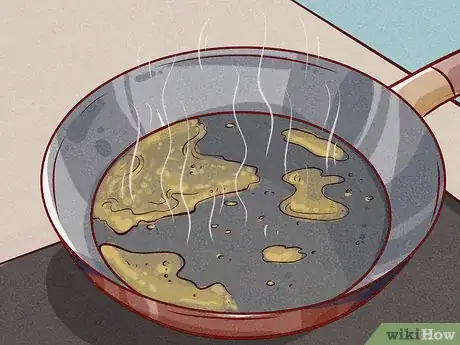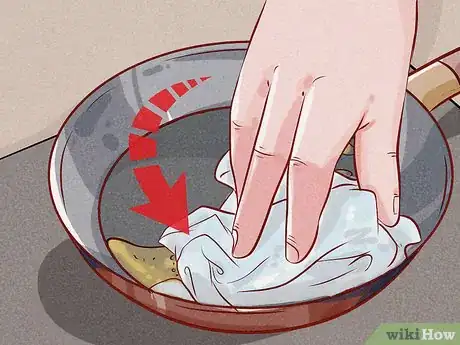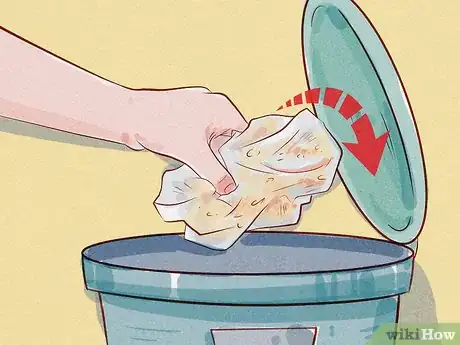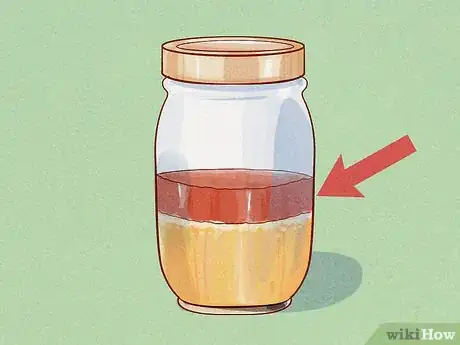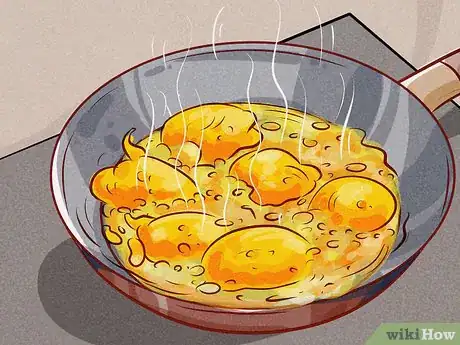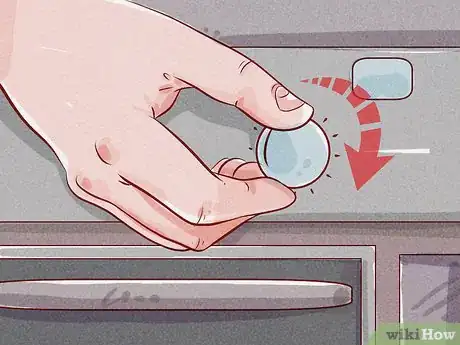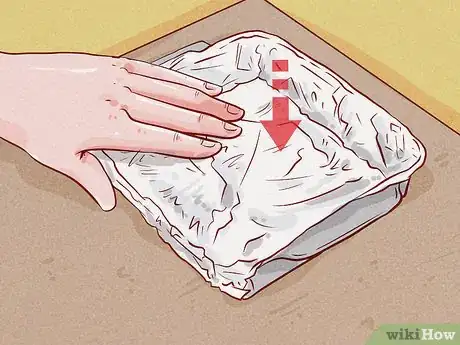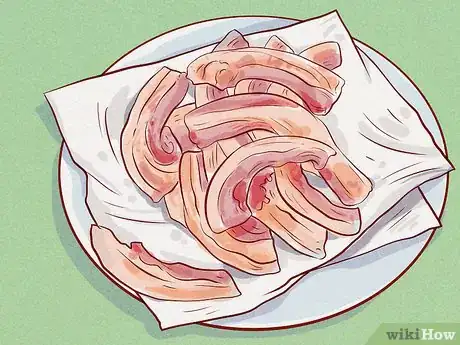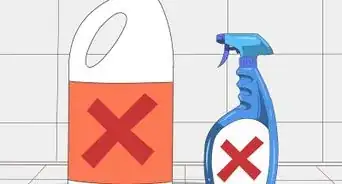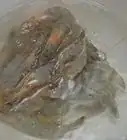This article was co-authored by Markeicha Dulaney. Chef Markeicha Dulaney is a Personal Chef and Founder of Sweet Monáe Personal Chef Services in 2015 in South Florida. She has over 22 years of experience in the kitchen and provides customizable menus to meet the dietary needs, taste preferences, style, and budget of each client. She also specializes in weekly in-home chef services, all-inclusive pro-chef services, boutique catering, and pantry organizing services. She was featured in The Knot's "Table for Two" YouTube episodes and has also been featured in Real Simple Magazine article on "What routines save you the most time.” Chef Markeicha Dulaney graduated with an Associate's Degree from the Pennsylvania Culinary Institute of Culinary Arts and is a longtime member of the USPCA (United States Personal Chef Association).
There are 8 references cited in this article, which can be found at the bottom of the page.
This article has been viewed 80,079 times.
Bacon—one of the most delicious foods in the universe—has a catch: you shouldn't pour the grease down the sink drain, as depositing bacon grease into any part of your plumbing system can lead to malfunctioning pipes and even sewage backup disasters. So, once you've prepared your mouth-watering strips of meat, what do you do with the pesky grease that's left in the pan? It's simple: throw your bacon grease away in the trash, re-use the grease to prepare another tasty treat, or try cooking your bacon in the oven to avoid the problem altogether.
Steps
Disposing of Bacon Grease in the Trash
-
1Wait for the bacon grease to cool to room temperature before attempting to handle it. Working with hot grease is a recipe for disaster. Burning yourself with grease won't help you get rid of it any faster.[2]
- Not only can hot grease burn you, it can also burn through your trash bag or shatter a glass jar.[2]
- It's better to be safe than sorry. Allow your grease to cool for at least 2 hours; adjust for more cooling time based on the volume of grease.[3]
- If there's an unavoidable time-crunch for your grease disposal, you can line a cup with heavy duty foil and very carefully pour the hot grease into the cup. Place the cup in the freezer, and later remove the foil along with the frozen fat.[4]
-
2Remove the bacon grease from the pan. The amount of grease you're dealing with will determine your method of removal. If there is a small amount of grease to dispose of, use a paper towel to wipe it out of the pan. For a large amount of grease, pour it into a sealable, disposable container. [5]
- Since your grease container is going in the trash, try to use a container that would not otherwise be recyclable.[6]
- If you don't have a container you're willing to part with, pour the grease into a dish and refrigerate until it solidifies. Then, scrape the grease out into the trash with a rubber spatula, and conclude by washing the dish.[7]
- If you know you're going to be eating a lot of bacon and tossing the grease, think ahead. Save non-recyclable containers to use as grease-disposal vessels the next time you make a bacon batch.[8]
Advertisement -
3Toss the grease in the trash! A paper towel soaked with a small amount of bacon grease can be placed in the trash—or in your compost. A disposable container filled with bacon grease can be placed directly in the trash, or solidified grease can be scraped out of a container and deposited in the trash.[9]
Re-Using Bacon Grease to Cook a New Dish
-
1Package your bacon grease for future use. Strain the grease into a sealable container. Use a cheesecloth or sieve to separate any leftover bits of food from the grease. Then, label the container "Bacon Grease,” and prepare to store it.[10]
-
2Store your packaged bacon grease. If you plan to use the grease right away, it can be stored out on the counter at room temperature. If you have long-term plans for your tasty grease, place it in the refrigerator or the freezer.[13]
- Bacon grease will keep safely for at least a month in the freezer. It's fine to add new grease to the same container over time.[14]
- Bacon grease stored in the refrigerator can pick up other scents, so try to use fridge-stored grease sooner than later.[15]
- Always sniff-test your bacon grease before using, as there is a possibility it could become rancid.[16]
-
3Cook more delicious foods using your preserved bacon grease. Bacon grease is an excellent substitute for lard or shortening. It can be used to infuse a delightful bacon flavor into a new dish.[17]
- Try using your bacon grease to prepare one of the following suggestions: deep fried vegetables, hearty meat dishes, authentic gingersnap cookies.[18]
Preparing Bacon in the Oven
-
1Preheat your oven to 400 °F (204 °C). You can avoid the leftover grease problem altogether by cooking your bacon in the oven. For this, you will need a large baking sheet and tin foil.[19]
-
2Line the entire baking sheet with aluminum foil. This includes lining the inner sides of the pan as well. Place your uncooked bacon strips directly onto the foil on the baking sheet. It's okay if your bacon strips touch each other on the foil, as they will shrink slightly during baking.[20]
- Lining the sides of the baking sheet with foil will keep the small amount of grease produced during baking contained in the foil for easy cleanup.[21]
-
3Cook the bacon. Depending on how crispy you prefer your bacon, cook time will range from 10-20 minutes. Once the bacon is cooked to your personal standards, remove the baking sheet from the oven and place the bacon strips on a paper towel to absorb any excess grease while the bacon cools.
- Finally, move the cool and crispy bacon strips onto a plate, serve, and eat![22]
Warnings
- Bacon grease can cause dangerous burns. For optimal safety, be sure to let bacon grease cool in the pan before attempting to transfer it into another container or handle it in any way. If you must dispose of the grease immediately, do so with extreme caution.[23]⧼thumbs_response⧽
- Pouring bacon grease down the sink or flushing it in the toilet is damaging for your pipes, and it can cause sewer backups for yourself and others. Just don't do it.[24]⧼thumbs_response⧽
- Adding small amounts of grease to your compost should not have adverse effects. However, if you add large quantities of grease to your compost, it is probable that your compost pile will become anaerobic and will therefore take much longer to decompose (it will also smell worse).[25]⧼thumbs_response⧽
References
- ↑ modernmom.com/2d72bd90-051f-11e2-9d62-404062497d7e.html
- ↑ https://www.thekitchn.com/how-to-cook-bacon-on-the-stovetop-cooking-lessons-from-the-kitchn-185903
- ↑ https://www.fsis.usda.gov/wps/portal/fsis/topics/food-safety-education/get-answers/food-safety-fact-sheets/safe-food-handling/deep-fat-frying-and-food-safety/ct_index
- ↑ https://www.thespruceeats.com/tips-for-discarding-bacon-fat-482385
- ↑ https://lifehacker.com/how-to-properly-dispose-of-grease-and-oil-1570863303
- ↑ https://lifehacker.com/how-to-properly-dispose-of-grease-and-oil-1570863303
- ↑ https://www.thespruceeats.com/tips-for-discarding-bacon-fat-482385
- ↑ https://lifehacker.com/how-to-properly-dispose-of-grease-and-oil-1570863303
- ↑ https://www.seattle.gov/Util/MyServices/DrainageSewer/FatsOilsGrease/index.htm
- ↑ https://lifehacker.com/how-to-properly-dispose-of-grease-and-oil-1570863303
- ↑ modernmom.com/2d72bd90-051f-11e2-9d62-404062497d7e.html
- ↑ https://lifehacker.com/how-to-properly-dispose-of-grease-and-oil-1570863303
- ↑ https://lifehacker.com/how-to-properly-dispose-of-grease-and-oil-1570863303
- ↑ https://www.thespruceeats.com/tips-for-discarding-bacon-fat-482385
- ↑ https://lifehacker.com/how-to-properly-dispose-of-grease-and-oil-1570863303
- ↑ https://www.thespruceeats.com/tips-for-discarding-bacon-fat-482385
- ↑ https://www.thespruceeats.com/tips-for-discarding-bacon-fat-482385
- ↑ https://www.thespruceeats.com/tips-for-discarding-bacon-fat-482385
- ↑ http://dish.allrecipes.com/the-easiest-way-to-cook-bacon/
- ↑ http://dish.allrecipes.com/the-easiest-way-to-cook-bacon/
- ↑ http://dish.allrecipes.com/the-easiest-way-to-cook-bacon/
- ↑ http://dish.allrecipes.com/the-easiest-way-to-cook-bacon/
- ↑ https://www.fsis.usda.gov/wps/portal/fsis/topics/food-safety-education/get-answers/food-safety-fact-sheets/safe-food-handling/deep-fat-frying-and-food-safety/ct_index
- ↑ https://www.seattle.gov/Util/MyServices/DrainageSewer/FatsOilsGrease/index.htm
- ↑ http://ceasethegrease.net/can-cooking-oil-go-in-compost-piles
About This Article
Bacon grease can cause a lot of issues if you pour it down the drain, so avoid plumbing troubles by disposing of your grease correctly or reusing it in your cooking. The easiest way to throw out your extra bacon grease is to wait for it to cool down, soak it up with a paper towel, and toss it in the trash. If there’s a lot of grease, try pouring it into a non-recyclable container you were going to throw out anyway. Alternatively, strain any bits of food from the grease, store it in a resealable container, and place it in the fridge. That way, you can substitute it for lard or shortening in dishes like fried vegetables or gingersnap cookies. For more tips, including how to cook bacon without being left with extra grease, read on!
